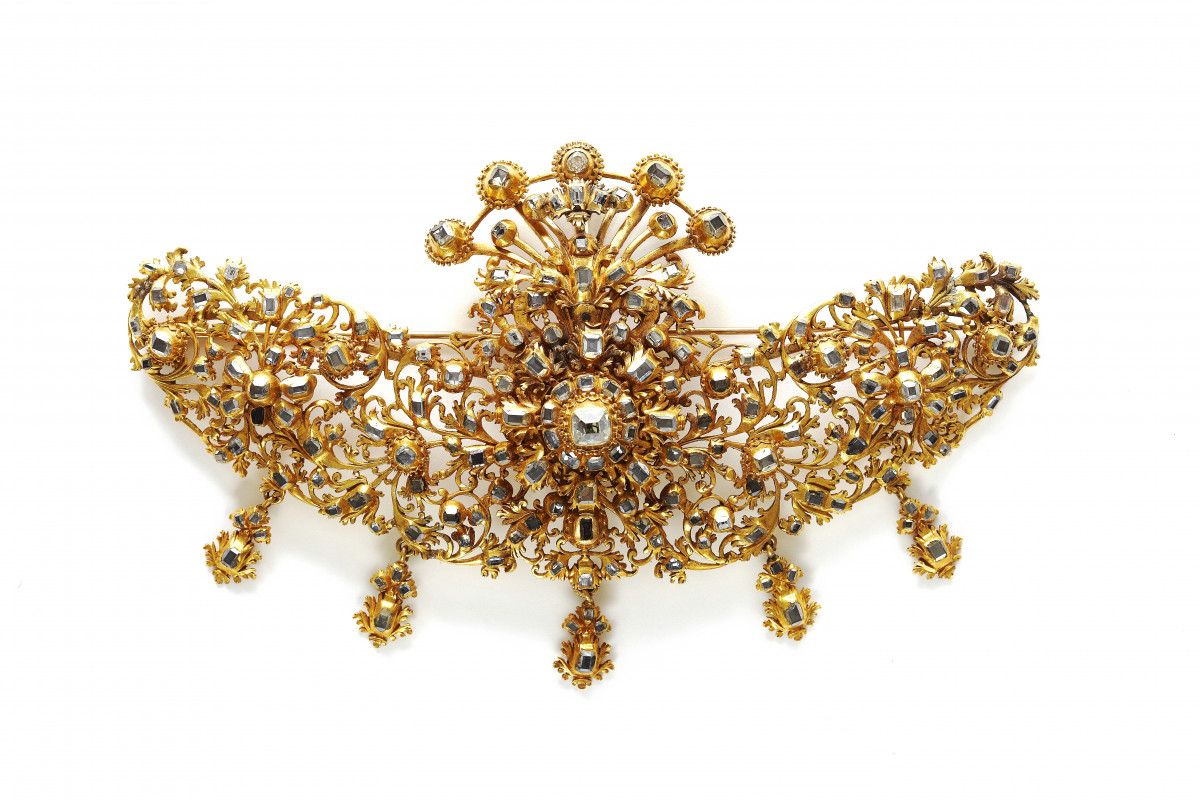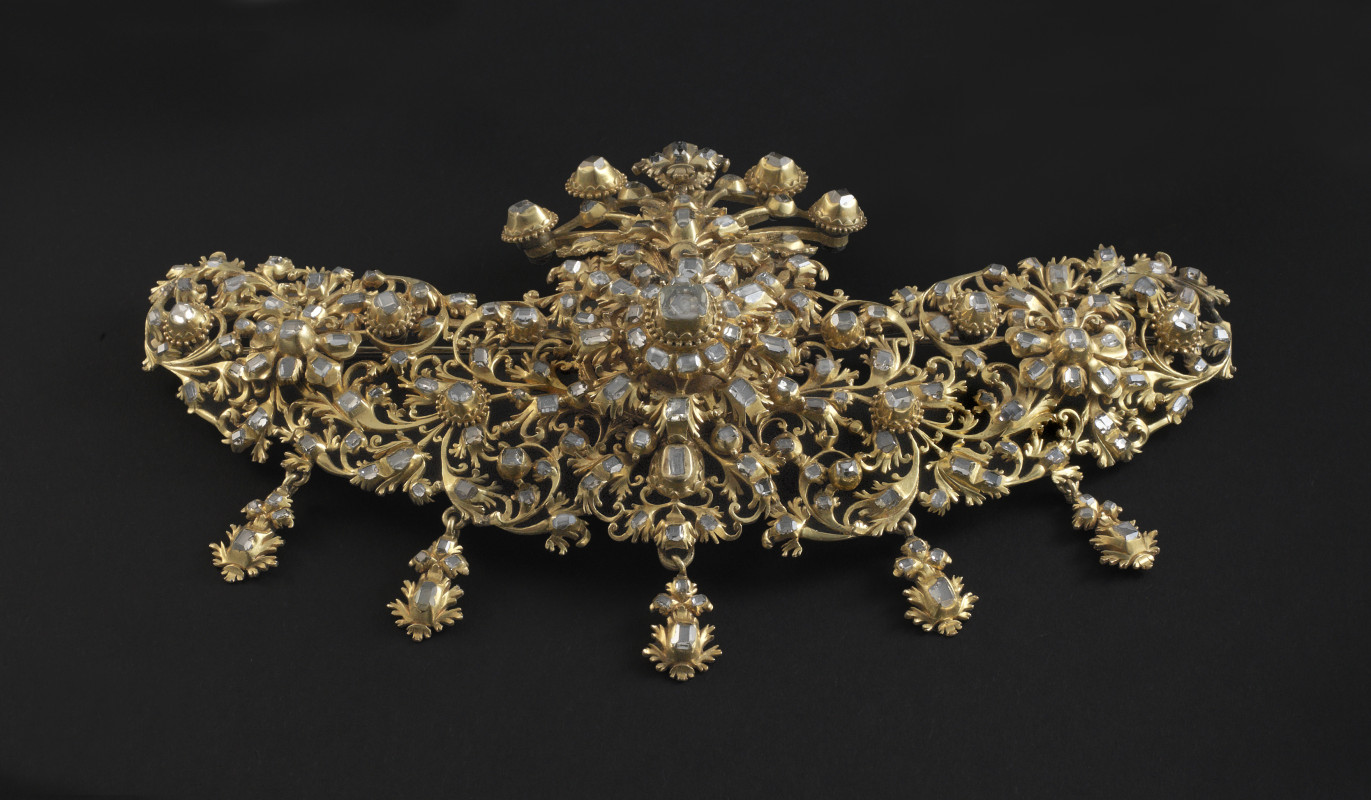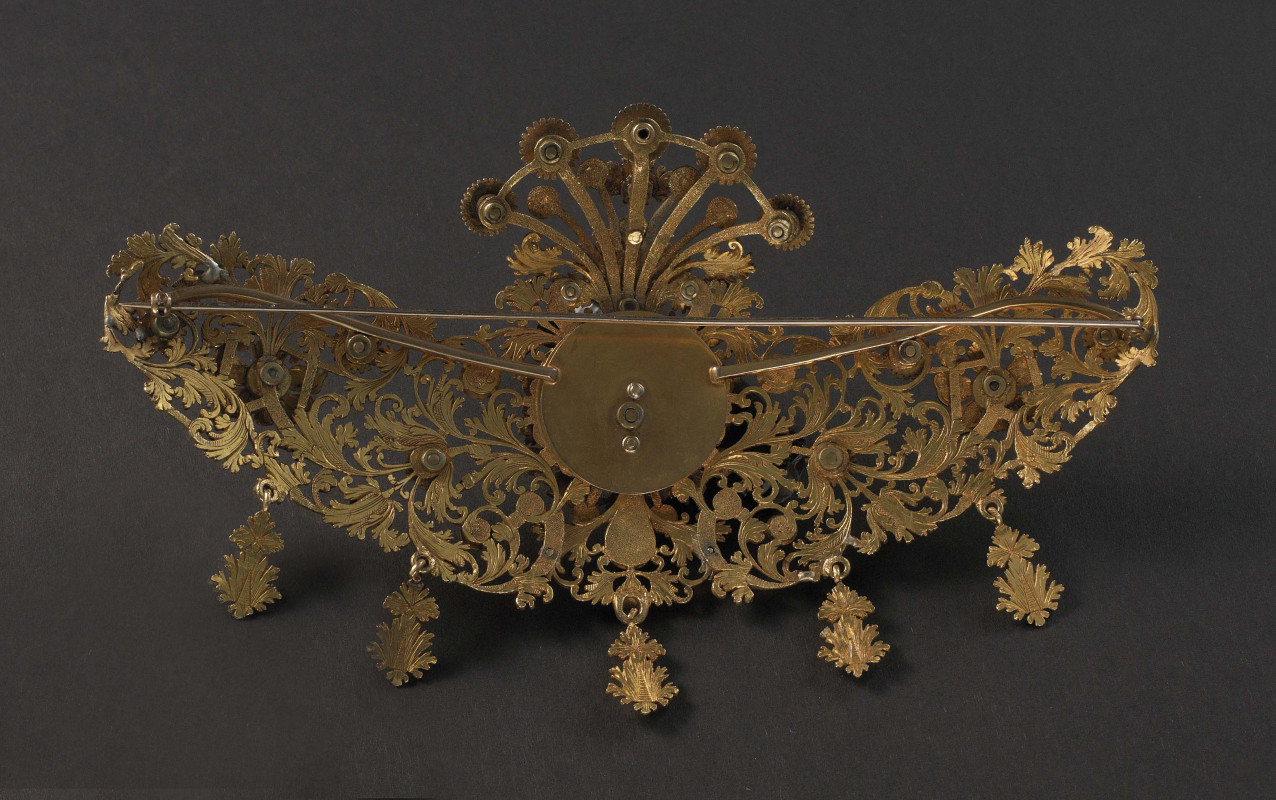Breast jewel, Corsage jewel
1650 - 1700
For centuries the bodice of a dress was considered an excellent place for eye-catching jewellery. The way these jewels were worn reflected the prevailing fashion. The baroque bodice ornament usually consisted of diamonds grouped around a central stone. One or more pearls would often hang from the jewel and it would be surmounted by a bow made of fabric. This arched bodice ornament was attached to the dress with two hooks. The floral, openwork motif is very much in line with international jewellery fashion in the second half of the seventeenth century. The jewel probably derives from the Iberian peninsula. It bears a close resemblance to several bodice ornaments in the Victoria & Albert Museum in London, which were acquired from the treasury of the cathedral in Zaragoza. In Spain silverware was valued as highly as precious stones were, and this is reflected in the different approach to setting stones. The more than one hundred table-cut diamonds are set in gold up to the girdle which provided a dark glow – in contrast to the fire and brilliance that is so typical of the brilliant-cut. In Spain the setting was not regarded purely as a vehicle for displaying the precious stones as it was in other Western European countries. The seventeenth century was extremely important for the evolution of cuts because table stones and facet stones were combined into the brilliant-cut to give exceptional brilliance.
Notice: Do you see a mistake? Or do you have extra information about this object? Please let us know!




